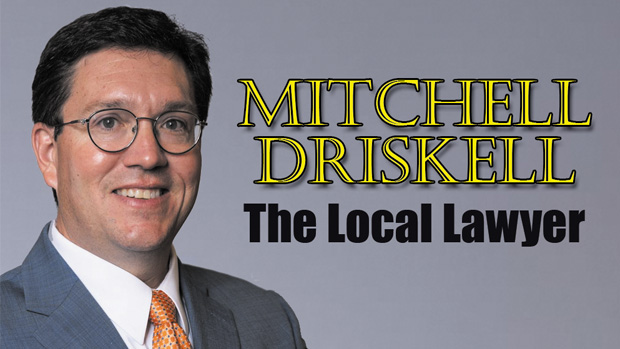
One Night in Bangkok Makes a Grown Man Crumble
There is a new whiz kid in the world of professional, grandmaster chess: 19-year-old, Philadelphia-born Hans Niemann has rocketed to the top in a few short years.
But wait, the 31-year-old world champion Magnus Carlsen (Norway) and old head, 34, grandmaster Hikaru Nakamura (Japan), among others, have accused Niemann of being a damn cheater.
Aggrieved, Niemann has filed a $100 million defamation lawsuit against his haters and chess.com, which publicized the cheating accusations and sided with the old chess establishment.
The haters questioned Niemann’s climb to the top for the past several years, but the controversy boiled over last month in St. Louis where Niemann faced off against Magnus, the Nordic Nerd, in a real life, in-person game up on a stage in front of hundreds of people live, thousands watching online, where cheating is virtually impossible. Niemann won. The Norwegian did not like the taste of the “L,” so he accused Niemann of cheating.
A month later, the two players squared off for an online game, and Magnus, the Liar of Lapland, quit the game—after one move—alleging that Niemann was cheating! One move!
Hikaru, grandmaster and popular chess.com streamer, joined in saying, “Yeah, that kid cheats.” Niemann lost sponsors and had invitations to prestigious, and lucrative, tournaments revoked. Neiman has sued all of them for defamation in a St. Louis federal court.
Now, you can probably imagine how a player cheats in an on-line game, but cheating at an in-person, tournament game? The players cannot wear earphones. They are patted down to make sure they have no electronic devices on them. They cannot see the crowd or their coaches for advice.
Here is where things get weird. The actual theory in the chess world is that Niemann had a butt plug up his, well, butt, and that this anal intruder was connected to a chess computer giving Niemann optimal moves through a series of vibrations telling him what piece to move and where to move it on the board. El oh el. A brilliant, young American starts kicking Euro-trash tail at chess and allegations of butt plug cheating emerge.
Not since Twin Galaxies accused Billy Mitchell of cheating in Donkey Kong has there been a nerdier injustice. Did you know that Billy Mitchell’s son went to West Point with my nephew? It’s true. My sister has a selfie with Billy Mitchell.
Regardless, if Niemann did not cheat, I hope he wins his lawsuit. My rule is you better be able to prove it before you accuse someone of cheating. Unfortunately for Niemann, my rule is not the law. Niemann is a limited public figure, a public-figure in the chess world, and to win defamation a public figure must not only prove that the statement made against him is untrue, but also that the person who said it either knew it was untrue or should have known it was untrue.
If the person who said it thought it was true, but was simply wrong, then the defamation suit must be dismissed, which is the usual result in defamation suits.

Fair Use: A Copy or a Transformation
In 1981, photographer Lynn Goldsmith took a now-famous portraits of the singer/songwriter Prince. In 1984, artist Andy Warhol took that photo, applied the Warhol filter to it and sold it to a magazine. The Warhol estate sold it again in 2016. The photographer, Goldsmith, got a cut of the first sale, did not get a cut of the 2016 sale, and sued the Warhol Estate for copywrite infringement.
The Supreme Court heard oral argument on the dispute last week. Warhol claimed “fair use,” that it is legal to take protected material and transform it to a new, unique product. The usual “fair use” example is the Supreme Court case Luther Campbell v. Acuff-Rose Music, Inc., in which 2 Live Crew made a rap parody of Roy Orbison’s “Oh, Pretty Woman.” The Supreme Court held that 2 Live’s use of the original song was “Fair Use” that did not violate copywrite law, not because the new song didn’t take from (copy) the original, but because 2 Live’s use was “transformative” and created a new message and an entirely new song, not a new version of the same song (listen to both and make up your own mind, NSFW though).
Look at the Goldsmith Photo and the Warhol edit—is the Warhol version “transformative”? Is the Warhol version a new visual product or is it just a new copy of the same image?
Warhol claimed his use conveyed a new message about pop culture something-or-another, but the Justices noted that any artist sued for copywrite violation would claim that the new product conveyed a different message and noted that artist intent cannot be the test.
Commentators think the Supreme Court took this case because current technology allows quick, easy, and high-volume copying, editing, and mass distribution of protected material and predict that the Court will rule against Warhol to add protection (and income) to artists vulnerable to having their work ripped off.
Mitchell Driskell practices law with the Tannehill Carmean firm and has been an Oxford lawyer for twenty-two years. You can call him at 662.236.9996 and email him at mitchell@tannehillcarmean.com. He practices criminal law, civil law, and family law.



